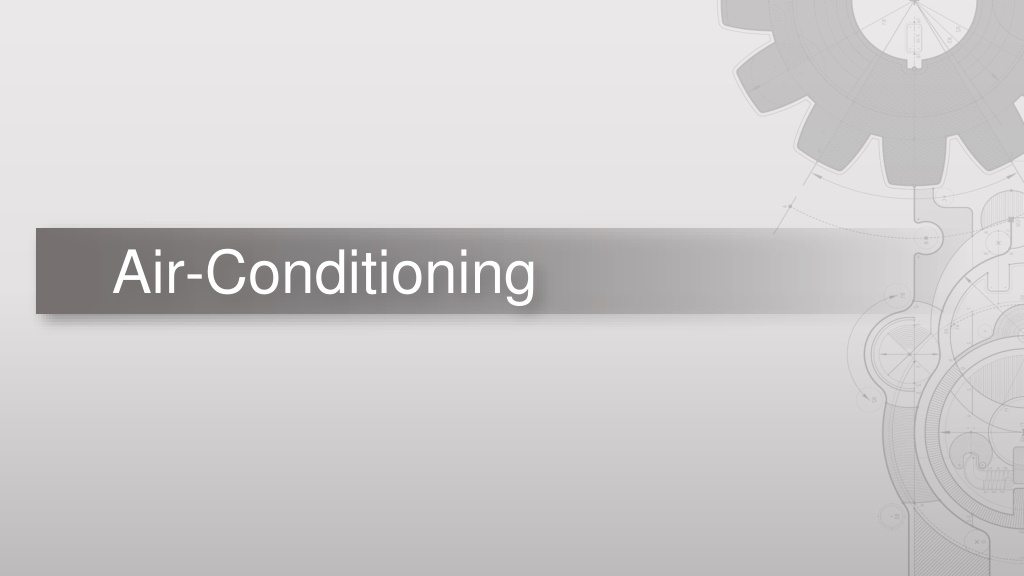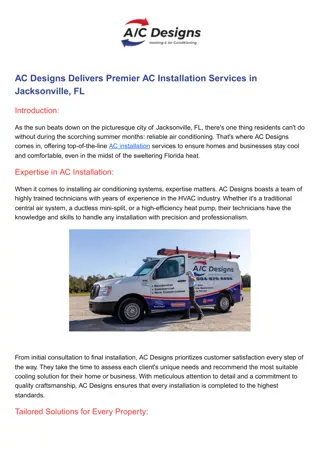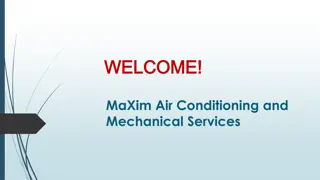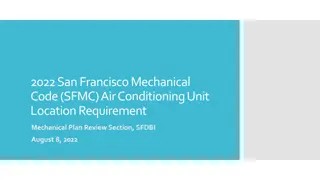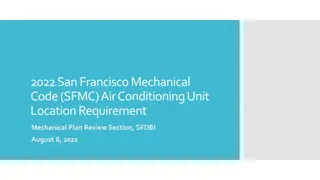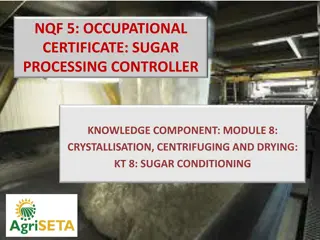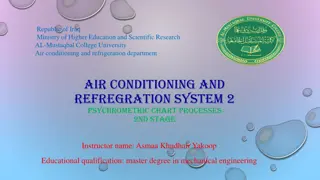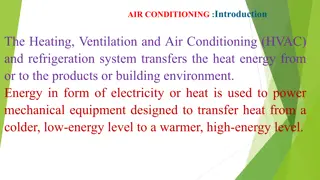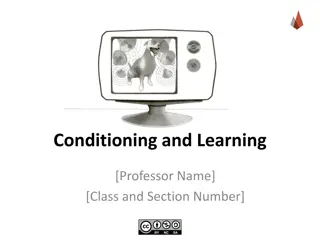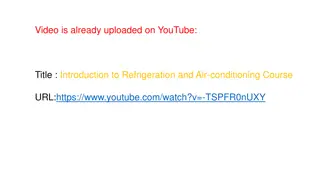Understanding the Main Components of Air Conditioning Systems
Air conditioning is a process that alters the properties of surrounding air to create comfortable conditions through cooling, heating, and dehumidification. Key components include the blower motor, compressor, condenser, expansion valve, filter, dryer, and evaporator. Blowers help in heat exchange, compressors create heat and pressure, condensers transfer heat, and expansion valves regulate refrigerant flow. Evaporators assist in turning liquid into gas for cooling indoor air.
Download Presentation

Please find below an Image/Link to download the presentation.
The content on the website is provided AS IS for your information and personal use only. It may not be sold, licensed, or shared on other websites without obtaining consent from the author. Download presentation by click this link. If you encounter any issues during the download, it is possible that the publisher has removed the file from their server.
E N D
Presentation Transcript
Definition A process in which the surrounding air properties are altered to more comfortable conditions. It invloves cooling, heating, and dehumidification.
Main Components Blower Motor Compressor Condenser Expansion Valve Filter Dryer Evaporator
Blower Motor Blowers will be located both next to condenser and evaporator to enable heat surrounding air. Blower next to condensor helps in rapid cooling of gas to fluid. Blower next to evaporator blows hot air in the space thus helping exchange with
Compressor As the name signifies this is where gaseous compresses creating a lot of heat and pressure. Most widely used compressors in air-conditioning idustry are rotary type due to their smooth and quiet operation. refrigerant
Condenser A seamless continuous copper tube construction. Pressurized gaseous refrigerant transfers its heat to surrounding air blowing over it. Simultaneously because of rapid cooling, refrigerant liquid state. turns into
Receiver-Dryer Small located in between condenser and expansion valve. Main function is to remove any excess moisture that may have leaked into refrigerant. Presence of moisture blockage of system by creating ice- crystals. A liquid reservoir vessel leads to
Expansion Valve Expansion valve/ Throttling device helps in depressurizing the liquid. Thus, it helps in regulating the flow of liquid refrigerant as needed. Most widely used expansion valves in air-conditioners are TEVs or thermal expansion valves.
Evaporator As the name suggests it helps in turning the liquid gaseous state. Comparitively, hot indoor air is blown over evaporator using a blower. As indoor hot air is being blown over the evaporator, eventually room s air grows cooler due to heat transfer. refrigerant to
Automobile Air Conditioning An automobile Works AC on System same However shall be driven by a belt connected engine s crank shaft. principle, compressor to
QUIZ What is the function of a receiver dryer? a) To remove excess heat from the system. b) To purify the gaseous refrigerant. c) To remove excess moisture from liquid refrigerant. d) To depressurize the system.
